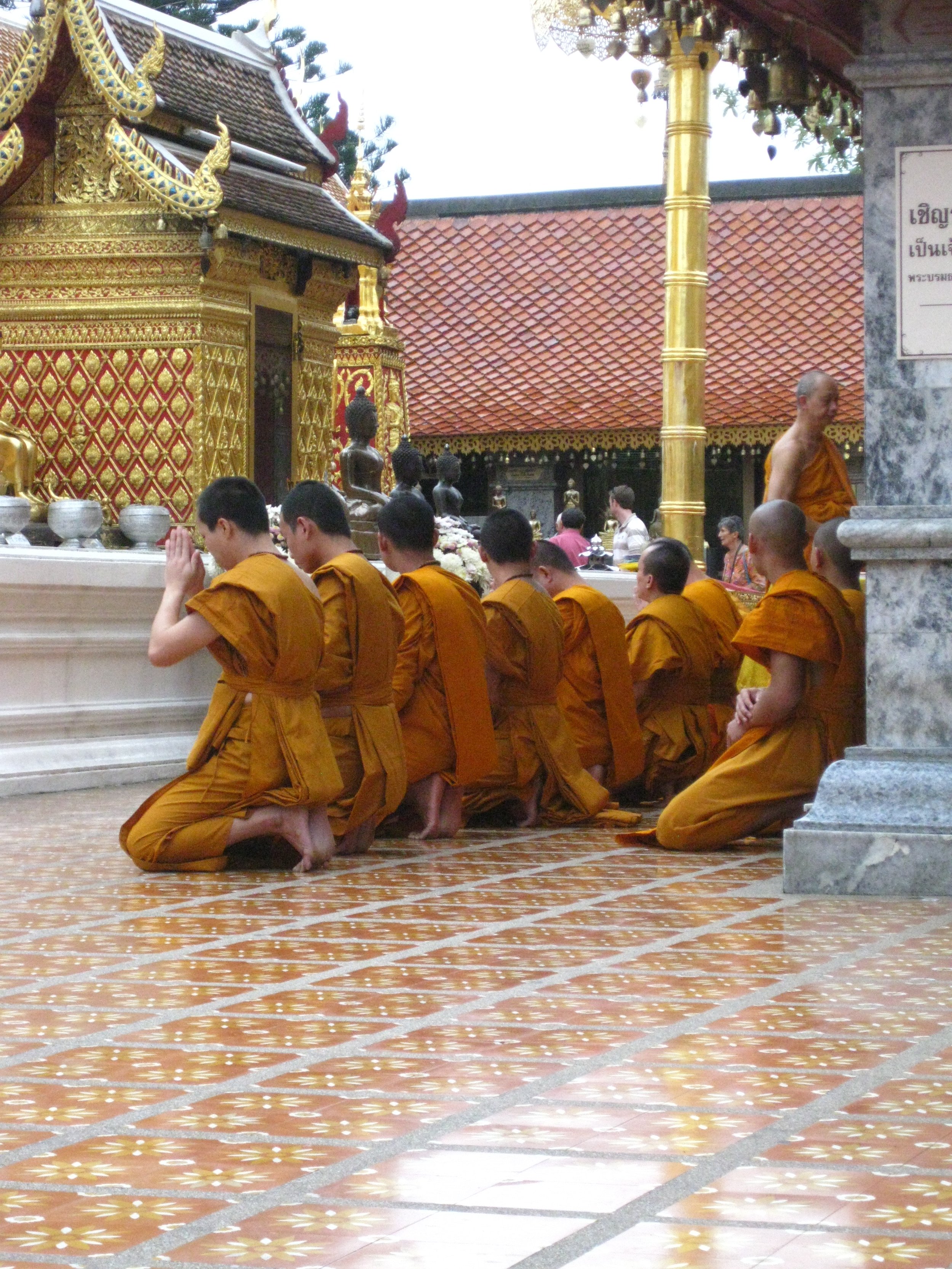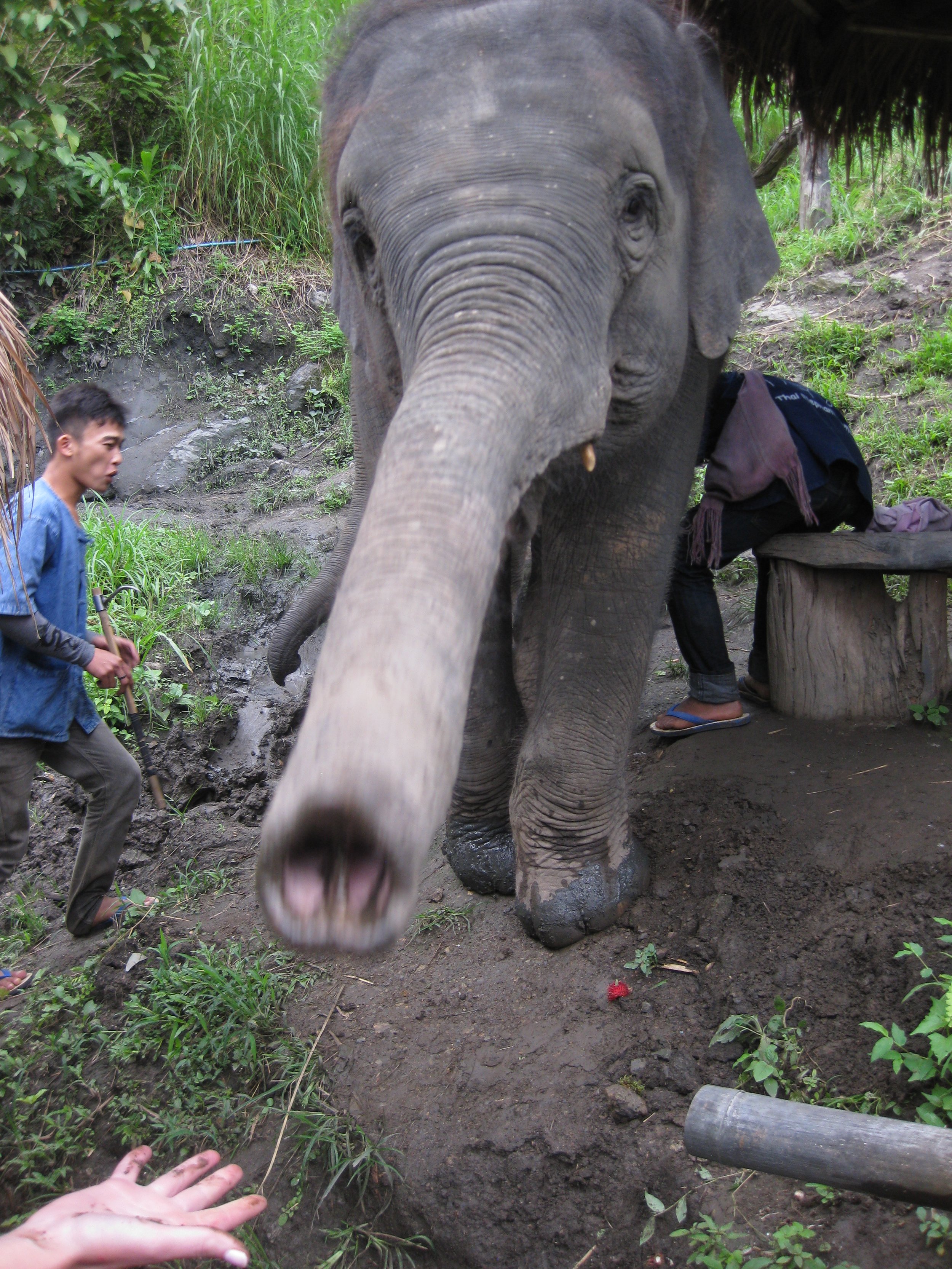An Intermingling
Story and photos by Cleo Margaret Abramian
You know you’re truly in a foreign place when the country smells different to you —when it swelters with layers unidentifiable to your virgin nose. It takes time to pick these layers apart. You must sit in them, let them seep into the fibers of your clothes, and explore the corners from which they’re drifting. The air in Chiang Mai smells like coconut rice, tamarind trees, diesel, sweat, fried pork, chili paste, cigarettes, and impending rain. But it took me the entire month I was there to put my finger on them and experience each one in their individual roundness.
Chiang Mai is the largest city in northern Thailand, nestled in the lush mountains of the tropical jungle. If you leave the city walls and travel several miles away from the bustling traffic, it is easy to get lost in the sea of vegetation which attempts to swallow everything in its path. Even within the urban city, vines creep up on every surface and slurp the rainy season’s downpour. Some days it rained so hard, it sounded like machine guns pelting the roof. When it wasn’t raining, the air was so thick I wanted to swim in it. It made the temples shimmer with mirage-like regality. Each was intricately unique, and even in the sobriety of sunshine, their bedazzled Buddha statues were intoxicating. Chiang Mai is a melting pot of spirituality, nature, authentic Thai culture, and tourist activities. This creates a dynamic environment, where locals, ex-pats, and tourists intermingle and bridge divergent worlds.
The air in Chiang Mai smells like coconut rice, tamarind trees, diesel, sweat, fried pork, chili paste, cigarettes, and impending rain. But it took me the entire month I was there to put my finger on them and experience each one in their individual roundness.
Must Do’s:
Songthaews—Literally translating to “two rows,” songthaews are Chiang Mai’s main form of public transportation that many locals take to get around. Though the drivers didn’t usually speak English and fellow passengers stared unabashedly at my foreignness, they’re a facet of daily life in Chiang Mai that made me feel connected to the community and forced me to learn my way around.
Thai Massage—About $5 for an hour-long massage, I writhed in agony as Thai women mercilessly worked various pressure points. But I did feel amazing afterwards.
The North Gate Jazz Bar—Located on Chiang Mai’s moat, this cozy bar hosts a different jazz band every night of the week. Europeans, Americans, and local Thai people comingle and listen to hodgepodge bands shred on the saxophone and drums. This is a great place to chill, sip Chang and Singha (popular Thai beers), and meet a cultural milieu of people.
Gad Loang—This indoor/outdoor marketplace is three stories high and extremely confusing. I was happily lost amongst the vendors, though, who sell everything from fresh lychee fruit to silk. Gad Loang is also a great place to practice bargaining in Thai and see the things locals buy.
Monks lead an overnight meditation retreat at Wat Suan Dok, one of Chang Mai’s most famous temples
Meditation Retreat—Wat Suan Dok (one of Chiang Mai’s most famous temples) offers an overnight meditation retreat led by resident monks. Though clearly a tourist activity, the retreat offers an immersion into Buddhist culture and ideology. We got the chance to speak with the monks about their lives and experience the techniques, frustrations, and sweet rewards of meditation.
Riding an Elephant—This truly humbling and indescribable experience is still hard for me to wrap my head around. Elephant preservations in Thailand can be controversial, so it’s really important to go through a humane organization that doesn’t overwork or saddle its elephants. We rode them bareback, bathed with them in the river, and fed them local sugarcane as we trekked through the trees.
A humanely treated elephant quenches his thirst
Visiting Pai—Known as the ‘hippie town of Thailand,’ Pai is nestled in the heart of the jungle about three hours north of Chiang Mai. Scattered with Rasta art, dreadlocked locals, and wheatgrass juice bars, Pai is unlike anywhere else in Thailand. I met a man whose life dream was to go to Burning Man. It is surrounded by enormous waterfalls, so it’s very easy to rent a motorbike and ride up to them. We traveled through rural roads and watched the cascading waterfalls from vine-braided bridges.
Munchie Musts:
Before arriving in Thailand, I considered myself a spicy food champ (I always put jalapeños in my eggs). This confidence was quickly drowned, however, in the blazing inferno of Thai cooking. I can honestly say that I shed tears during 2/3 of the meals I ate there and felt my intestines on a constant slow sear. Strangely, though, I began to crave the paralyzing spice and was sad when I returned to the mild monotony of American food.
Kao Soi—A distinctly northern Thai dish consisting of egg noodles and meat in a coconut curry broth, topped with crispy fried noodles.
Street Noodles—Sketched out by dirty street cars piled high with raw meat? Tuck those wimpy inhibitions in your tourist moneybag and experience the glory of Thai street food. One of the most common is basic noodle soup. Served with your choice of meat and cooked in scalding broth, this simple dish became one of my staple meals in Chiang Mai.
A Thai street vendor
Mango Sticky Rice—The most delicious thing you will ever eat. Sticky rice cooked in coconut water, then covered in coconut milk, sprinkled with cashews, and served under fresh mango. It sounds simple, but it will make your soul rain coconut bliss.




